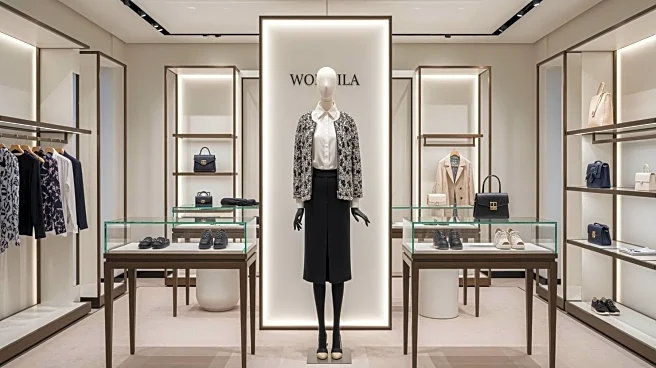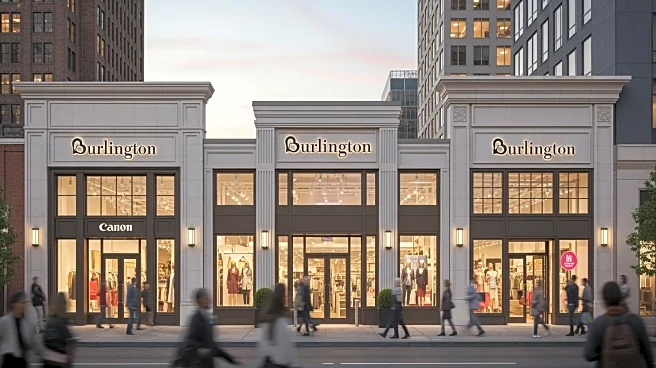What's Happening?
Macy's, a longstanding department store chain, is undergoing significant changes under the leadership of CEO Tony Spring. Spring, who took over in early 2024, is focusing on improving customer service
and store presentation to combat declining sales and customer dissatisfaction. The company plans to reduce its number of stores from 449 to approximately 350, with 125 'priority' stores receiving enhanced investment. These changes include increased staffing, improved merchandising, and a focus on newer brands. Macy's aims to leverage its historical goodwill and cultural significance, such as the Macy's Thanksgiving Day Parade, to reconnect with customers and improve its market position.
Why It's Important?
Macy's strategic shift is crucial as it attempts to regain its footing in a retail landscape dominated by e-commerce giants like Amazon and discount retailers such as Target. The company's focus on enhancing the in-store experience is a bid to differentiate itself from online shopping and attract customers back to physical locations. Success in this endeavor could stabilize Macy's financial performance and preserve jobs, while failure might lead to further store closures and layoffs. The outcome of these changes will impact Macy's ability to compete in the evolving retail market and maintain its cultural relevance.
What's Next?
Macy's will continue to implement its turnaround strategy, focusing on the 125 priority stores and gradually closing underperforming locations. The company will monitor customer feedback and sales performance to assess the effectiveness of its changes. Additionally, Macy's will seek to attract new brands and regain partnerships with those that have left. The retail industry will be watching closely to see if Macy's can successfully adapt to changing consumer preferences and economic pressures.
Beyond the Headlines
Macy's transformation highlights broader challenges faced by traditional retailers in adapting to digital commerce and shifting consumer habits. The company's efforts to improve customer service and store aesthetics reflect a need for physical stores to offer unique experiences that cannot be replicated online. This shift may influence other retailers to reevaluate their strategies and prioritize customer engagement and satisfaction.











